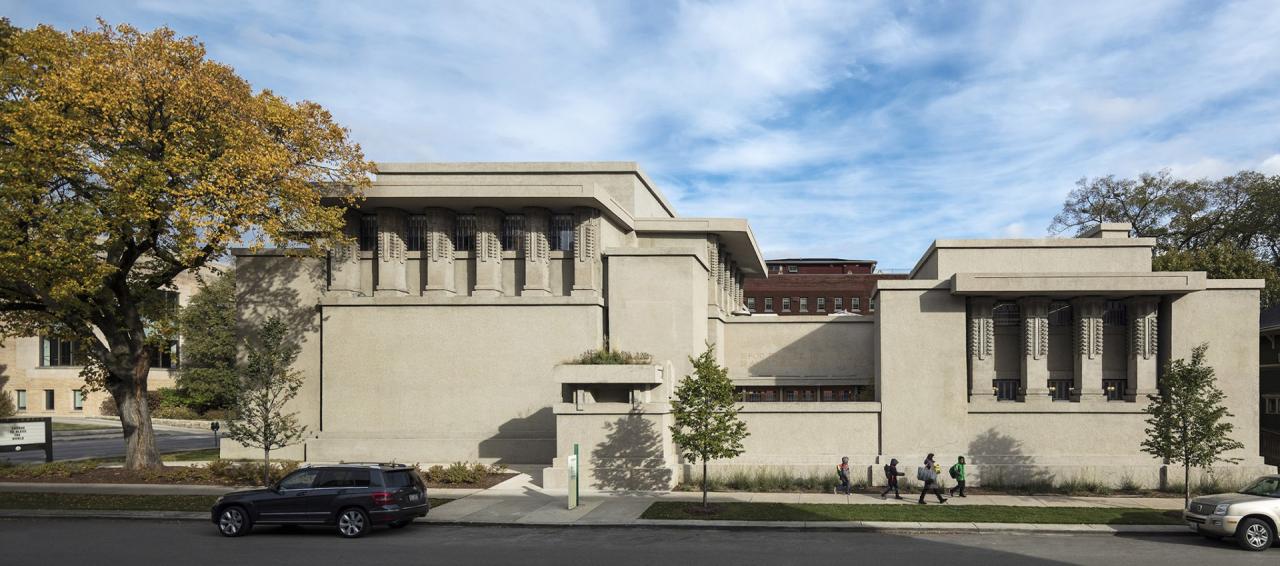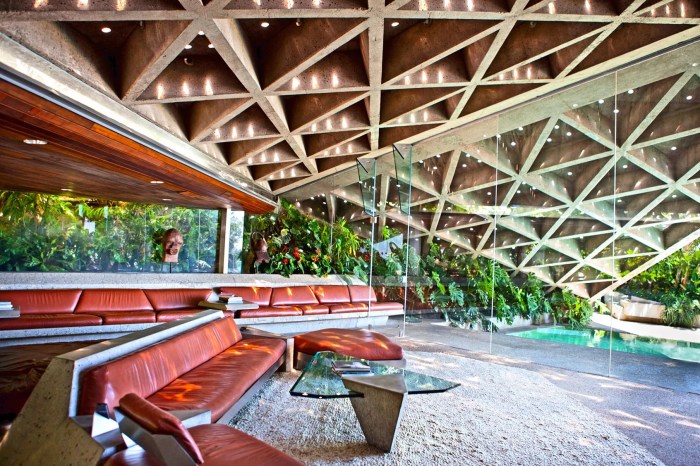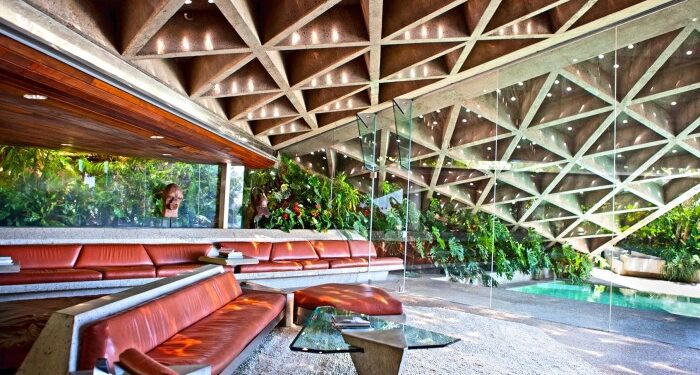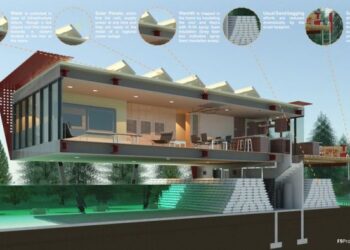As Unity Temple vs Lautner House: Envelope Design Comparisons takes center stage, this opening passage beckons readers with casual formal language style into a world crafted with good knowledge, ensuring a reading experience that is both absorbing and distinctly original.
Exploring the architectural nuances of Unity Temple and Lautner House, this discussion delves into the intricate details of their envelope design, shedding light on the fascinating interplay between form and function.
Unity Temple vs Lautner House: Envelope Design Comparisons
In comparing the envelope design of Unity Temple and Lautner House, we will delve into the architectural style, materials used, the relationship between form and function, and the influence of natural light on each structure.
Architectural Style
Unity Temple, designed by Frank Lloyd Wright, is a prime example of Prairie School architecture known for its horizontal lines, flat roofs, and integration with nature. On the other hand, Lautner House, designed by John Lautner, showcases a more futuristic and organic architectural style with its unique geometries and use of concrete.
Materials Used
Unity Temple boasts a construction of reinforced concrete, brick, and art glass, emphasizing a harmony of materials that contribute to its overall design. In contrast, Lautner House utilizes concrete and glass predominantly, highlighting a sleek and modern aesthetic that complements its architectural vision.
Form and Function
The envelope design of Unity Temple prioritizes both form and function, with its intricate geometric patterns serving a dual purpose of aesthetic appeal and structural integrity. Similarly, Lautner House's envelope design seamlessly marries form and function, showcasing innovative shapes that also enhance the building's energy efficiency and natural ventilation.
Influence of Natural Light
Natural light plays a significant role in the envelope design of both Unity Temple and Lautner House. Unity Temple's art glass windows and skylights allow for a play of light and shadow that accentuates the architectural details, while Lautner House's expansive glass walls invite abundant natural light, creating a seamless connection between the interior and exterior spaces.
Unity Temple Envelope Design
Unity Temple, designed by Frank Lloyd Wright, is renowned for its innovative envelope design that revolutionized modern architecture. The envelope design of Unity Temple not only served functional purposes but also symbolized Wright's commitment to blending nature and architecture seamlessly.
Historical Significance
The envelope design of Unity Temple holds immense historical significance as it marked a departure from traditional architectural norms. Wright's use of exposed concrete in the envelope design was groundbreaking at the time and set a new standard for modern architecture.
Use of Exposed Concrete
The use of exposed concrete in the envelope design of Unity Temple was a bold choice that showcased the raw beauty of the material. This decision not only added a sense of authenticity to the structure but also highlighted Wright's emphasis on honesty in design.
Unique Features and Innovations
One of the unique features of the envelope design of Unity Temple is the geometric patterns created by the concrete blocks. These patterns not only added visual interest to the facade but also played with light and shadow to create a dynamic effect.
Sustainable Design Elements
Unity Temple's envelope design also incorporated sustainable elements ahead of its time. The use of concrete helped regulate temperature within the building, reducing the need for excessive heating or cooling. Additionally, the design allowed for ample natural light to enter, minimizing the reliance on artificial lighting.
Lautner House Envelope Design

The envelope design of Lautner House is a masterpiece of modern architecture, showcasing innovative and unique features that set it apart from traditional designs.
Inspiration Behind the Envelope Design
The inspiration behind the envelope design of Lautner House can be traced back to the concept of blurring the lines between indoor and outdoor spaces. Architect John Lautner aimed to create a seamless connection between the living areas and the surrounding environment, allowing for a harmonious interaction between nature and architecture.
Use of Glass in the Envelope Design
Glass plays a pivotal role in the envelope design of Lautner House, serving as a transparent barrier that allows natural light to flood the interior spaces. The extensive use of glass not only enhances the visual appeal of the house but also creates a sense of openness and transparency, blurring the boundaries between inside and outside.
Interaction with Surroundings
The envelope design of Lautner House interacts with its surroundings in a way that complements and enhances the natural beauty of the location. The large glass panels offer panoramic views of the surrounding landscape, creating a seamless connection with the outdoor environment.
The design also allows for ample natural light to enter the living spaces, further blurring the distinction between interior and exterior.
Special Structural Considerations
In the envelope design of Lautner House, special structural considerations were taken into account to ensure the stability and durability of the glass elements. The use of advanced engineering techniques and materials allowed for the creation of large, cantilevered glass panels that define the unique aesthetic of the house.
These structural elements not only contribute to the architectural beauty of the design but also ensure the safety and longevity of the envelope.
Unity Temple vs Lautner House: Environmental Responsiveness

Unity Temple and Lautner House both showcase different approaches to environmental responsiveness in their envelope designs. Let's delve into the energy efficiency, climate responsiveness, passive design strategies, and thermal performance of these iconic structures.
Energy Efficiency and Climate Responsiveness
- The envelope design of Unity Temple focuses on energy efficiency by incorporating thick masonry walls and ample natural lighting, reducing the need for artificial heating and cooling.
- Lautner House, on the other hand, utilizes a combination of concrete and glass in its envelope design, allowing for passive solar heating and natural ventilation to regulate indoor temperatures.
- Both buildings respond to their respective local climate conditions by optimizing natural light and ventilation to enhance occupant comfort while minimizing energy consumption.
Passive Design Strategies
- Unity Temple employs passive design strategies such as deep roof overhangs and strategically placed windows to control solar heat gain and maximize natural light penetration.
- Lautner House integrates passive solar design principles through the orientation of its structure, maximizing solar exposure in winter and shading in summer for optimal thermal performance.
Thermal Performance and Sustainability
- Unity Temple's envelope design, with its thermal mass properties and natural ventilation systems, contributes to a sustainable and energy-efficient building that minimizes heat loss and gain.
- Lautner House's envelope design prioritizes thermal insulation and solar gain management, ensuring a comfortable interior environment while reducing reliance on mechanical systems.
- Both buildings exemplify sustainable practices through their envelope designs, showcasing how architectural innovation can harmonize with environmental stewardship.
Ultimate Conclusion
In conclusion, the comparison between Unity Temple and Lautner House's envelope designs offers a compelling insight into the innovative approaches taken by each architect. With a focus on sustainability and aesthetic appeal, these structures stand as testaments to the enduring power of architectural design.
FAQ Guide
What materials are primarily used in the envelope design of Unity Temple and Lautner House?
The envelope design of Unity Temple features exposed concrete, while Lautner House incorporates glass extensively.
How do the envelope designs of Unity Temple and Lautner House respond to local climate conditions?
Unity Temple's envelope design focuses on sustainable elements, while Lautner House utilizes glass strategically to interact with its surroundings.
Are there any special structural considerations in the envelope design of Lautner House?
Lautner House's envelope design is carefully crafted to blend with the surrounding landscape, emphasizing a seamless integration with nature.










